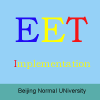-
Course Management Systems
普通类 -
- 支持
- 批判
- 提问
- 解释
- 补充
- 删除
-
-
Course Management Systems
INTERNET-BASED SOFTWARE that brings automation to many of the administrative aspects of teaching. The CMS became widely available in 1997, and its popularity and use have increased dramatically ever since. A variety of systems have been developed and adopted by colleges and universities across the country as well as internationally. They have also been embraced by many publishers and e-learning companies that provide curriculum for the K-12 and corporate training markets. The software is designed to support a social constructionist framework of education that can allow for collaboration, activities and reflection.
They were initially used in distance education programs, but there has been increased use in on-campus courses. Some of the administrative benefits of these systems include controlled access to materials and online management of assignments and links to the student information system. The instructional benefits include integrated communication tools (e.g., chat rooms, Web pages, email lists) and tools for building online content (e.g., HTML page builder, animations, simulations). Given the increased popularity of the CMS as an instructional tool, it’s important to look at how the options can be utilize for both instructors and students.



-
Teacher Possibilities
How the CMS is implemented usually is left to the individual instructor. The CMS can be utilized as either a supplement to a course or as organizing the course. In supplementing a course the lecture and teacher-led activity remain the organizing principle. The instructor uses the CMS as an add-on to the course. For example,
publishing their syllabi and class assignments.
creating PowerPoint presentations of their lecture notes that they can upload or provide Web hyperlinks to.
posting links to Word or PDF files for reading materials or links to online references.
test-authoring tool, to generate a series of multiple-choice questions that can be graded automatically.
student feedback to a number of comments on threaded discussions.
When the CMS is used to organize the course, the instructor uses it to outline the course as if it were a table of contents, except it actually directs the student to the different aspects of the course. Hyperlinks give students access to the content itself or to the areas within the CMS. There might also be text, PowerPoint, audio or video created by the instructor to provide a context for the readings and activities.
For instance, the CMS can direct students to read part of a PDF and the go to a different section of the CMS that provides a hyperlink to simulations illustrating what students read. Students then can be directed to a different text which explains the relation between the PDF and the simulation. The course table of contents can include open-ended questions for student reflection. In addition, students could be asked questions as they progress from one reading selection to another in the CMS, or be told to go back to the CMS to answer a question before finishing a reading assignment.
Finally, in K-12 education where student attendance is an issue, the CMS allows access to notes and information that was missed during the absence. Students can access from home or when they return to get caught up, without the teacher reviewing the material from them.-
Student Interaction
Aside from the instructors implementation students can have various degrees of interaction which could include:

reading and working with the lecture interactively in any web browser.
checking the CMS for their assignments and due dates.
adding comments to all lecture units.
evaluating the self-controlling exercises online.
printing individual documents of lecture-prepared notes.
working in collaborative work groups and exchange or publish files in a user space.
contributing to a discussion forum (or in the chat box) on topics of the course
Also, there is a virtual community function that could be used to create a virtual community of students sharing information and learning from each other, rather than participating just because they would be graded. In addition, the virtual classroom functionality could be used by the instructor for selected students as a reinforcement of the course concepts, as well as a way for subgroups of students to get feedback from the teacher.-
Author
Jerry Ruiz
Ruiz, J. (2005). Course Management Systems In B. Hoffman (Ed.), Encyclopedia of Educational Technology. -
-
- 标签:
- virtual
- access
- education
- instructor
- management
- systems
- student
- cms
- course
- students
- reading
- lecture
-
加入的知识群:



学习元评论 (0条)
聪明如你,不妨在这 发表你的看法与心得 ~